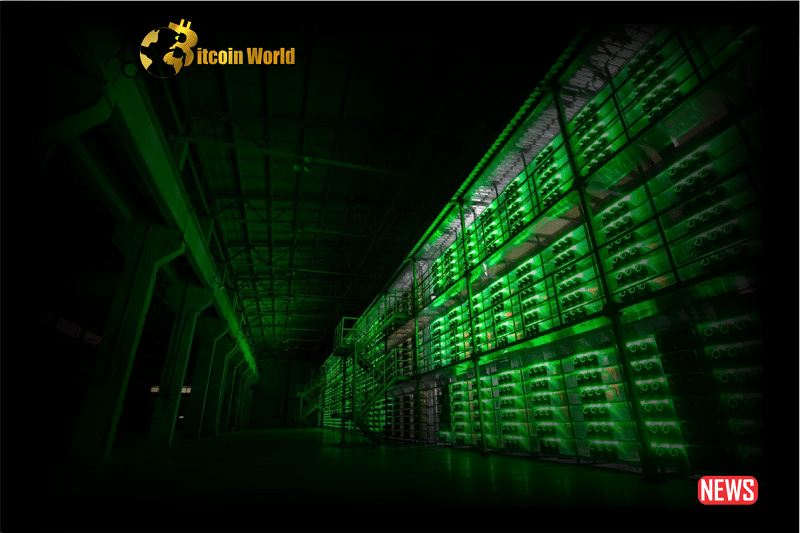Hold onto your hats, crypto enthusiasts! The second quarter of this year was nothing short of spectacular for Bitcoin miners. Imagine this: they collectively pocketed a staggering $184 million just from transaction fees. Yes, you read that right! That’s more than their entire earnings from transaction fees for the whole of 2022. Ready to dive into what fueled this impressive surge?
Why the Sudden Surge in Bitcoin Miner Earnings?
Think of Bitcoin miners as the tireless record-keepers of the Bitcoin network. They validate transactions and add them to the blockchain, and for their efforts, they earn rewards – both newly minted Bitcoin and the fees users pay to have their transactions included in a block. Q2 saw a perfect storm of factors that significantly boosted these fee earnings:
- Bitcoin’s Price Rebound: A rising tide lifts all boats, and the resurgence of Bitcoin’s price undoubtedly contributed to increased activity and, consequently, higher transaction fees.
- The BRC-20 Token Phenomenon: Enter the BRC-20 tokens! This new token standard on the Bitcoin network allowed for the creation and transfer of fungible tokens, sparking a flurry of activity and dramatically increasing demand for block space.
Coin Metrics’ research paints a clear picture: the $184 million haul represents a whopping 270% jump compared to the first quarter of 2023. In fact, it’s the first time since Q2 2021 that transaction fees have crossed the $100 million mark in a single quarter. That’s a significant milestone!
BRC-20 Tokens: Game Changer or Passing Fad?
The buzz around BRC-20 tokens is hard to ignore. But what exactly are they, and why did they cause such a stir?
- New Use Cases for Bitcoin: BRC-20s essentially brought the functionality of creating and trading tokens directly onto the Bitcoin blockchain, previously more common on other networks like Ethereum.
- Increased Network Activity: The novelty and potential of BRC-20 tokens led to a surge in minting and transferring these tokens, filling up Bitcoin blocks and driving up transaction fees.
- Scalability Considerations: While exciting, the influx of BRC-20 transactions also highlighted the ongoing need for scalability solutions like the Lightning Network to handle increased demand efficiently.
Breaking Down the Numbers: Where Did the Earnings Come From?
While the $184 million in transaction fees is impressive, it’s important to keep it in perspective. Let’s look at the bigger picture:
| Earnings Source | Amount (Q2) | Percentage of Total Earnings |
|---|---|---|
| Transaction Fees | $184 Million | 7.7% |
| Block Rewards | ~$2.216 Billion | 92.3% |
| Total Earnings | ~$2.4 Billion | 100% |
As you can see, block rewards (the 6.25 BTC miners receive for each block they solve) still constitute the lion’s share of their earnings. However, the contribution of transaction fees is becoming increasingly significant, especially as we approach the next Bitcoin halving in May, which will reduce block rewards to 3.125 BTC.
Beyond the Fees: What Else Was Good for Miners in Q2?
It wasn’t just about the transaction fees. Bitcoin miners had other reasons to celebrate in the second quarter:
- Policy Wins: The defeat of the proposed Digital Asset Mining Energy (DAME) tax in the US provided a significant sigh of relief for the industry.
- Favorable Economic Conditions: Easing inflationary pressures led to a decrease in electricity rates in the United States, a crucial factor for mining profitability.
The Road Ahead: Challenges and Opportunities for Bitcoin Miners
Despite the positive developments, the Bitcoin mining landscape remains competitive. Here’s what miners need to consider moving forward:
Challenges:
- Rising Hashrate: As more miners join the network and existing miners upgrade their equipment, the hashrate (the total computing power used to mine Bitcoin) continues to climb, increasing competition for block rewards and transaction fees.
- Maintaining Efficiency: With increasing competition, miners must constantly strive for operational efficiency, including utilizing the latest ASIC hardware like the S19 XP, to stay profitable.
- The Halving Event: The upcoming halving will significantly reduce block rewards, making transaction fees an even more critical revenue stream.
Opportunities:
- Growing Crypto Adoption: As cryptocurrency adoption continues to grow, the potential for increased transaction volume and higher fees remains significant.
- Technological Advancements: Innovations in mining hardware and energy-efficient practices can help miners stay ahead of the curve.
- Diversification: Exploring opportunities beyond traditional Bitcoin mining, such as providing infrastructure for other blockchain networks or engaging in renewable energy initiatives, could provide new revenue streams.
Key Takeaways for the Crypto Community
- Transaction fees are becoming a more significant revenue source for Bitcoin miners. This trend is likely to continue, especially after the next halving.
- BRC-20 tokens have demonstrated the potential to drive significant activity on the Bitcoin network. Their long-term impact remains to be seen, but they’ve certainly shaken things up.
- Bitcoin miners are resilient and adaptable. They navigate a complex landscape of technological advancements, regulatory changes, and market fluctuations.
The Bottom Line: An Exciting Time for Bitcoin Mining
The second quarter of 2023 was a testament to the dynamism of the Bitcoin network and the adaptability of its miners. The surge in transaction fee revenue, fueled by factors like Bitcoin’s price recovery and the emergence of BRC-20 tokens, paints a picture of a maturing ecosystem. While challenges remain, the opportunities for Bitcoin miners are abundant. Staying efficient, embracing innovation, and keeping a close eye on the evolving landscape will be crucial for success in this exciting and rapidly changing market. The story of Bitcoin mining continues to unfold, and the next chapter promises to be just as captivating.
Disclaimer: The information provided is not trading advice, Bitcoinworld.co.in holds no liability for any investments made based on the information provided on this page. We strongly recommend independent research and/or consultation with a qualified professional before making any investment decisions.


